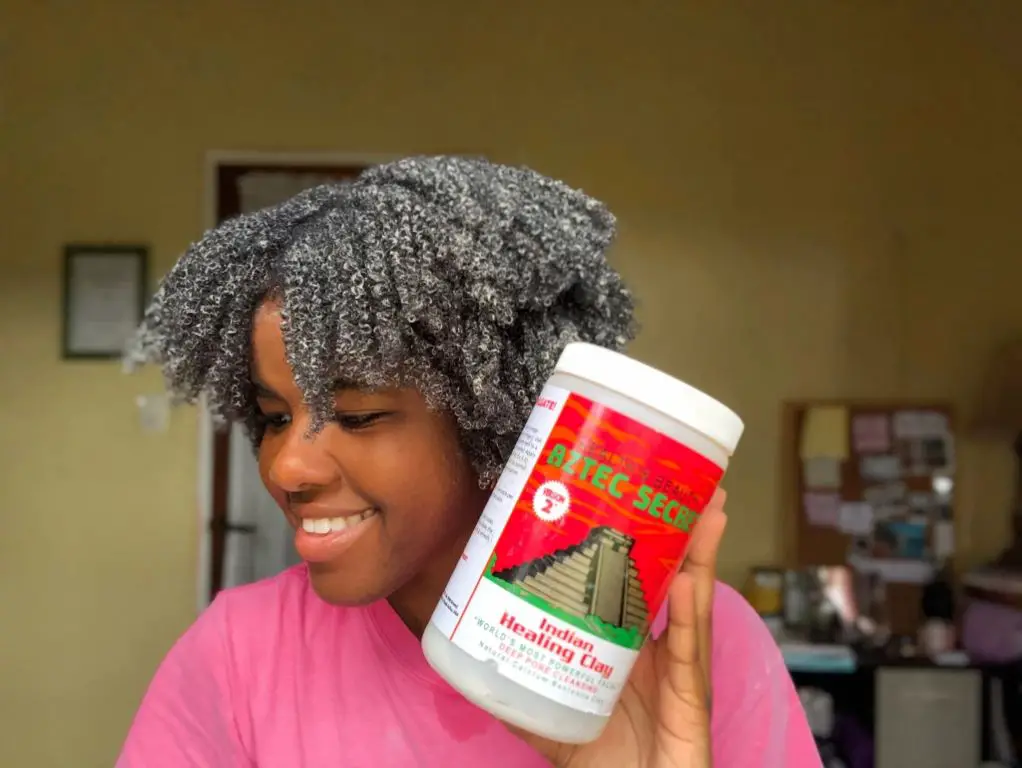Is Aztec Clay The Same As Bentonite Clay?
Introducing Aztec Clay
Aztec clay, also known as Aztec secret Indian healing clay, is a type of bentonite clay mined from Death Valley, California. It has been used for centuries by indigenous people for its healing and detoxifying properties[1]. Aztec clay contains high amounts of calcium, magnesium, and potassium, giving it a powerful ability to draw out impurities from the skin. When mixed with water or apple cider vinegar, Aztec clay forms a thick paste that can be applied topically. Key properties of Aztec clay include:
- Highly absorbent and great for deep cleansing
- Helps tighten and tone the skin
- Can remove debris from pores
- Helps improve skin complexion
Aztec clay masks are known for their ability to deeply cleanse the skin and remove toxins, oils, and environmental pollutants from pores. The clay’s negatively charged ions bond to the positively charged ions of impurities, pulling them from the skin. This makes Aztec clay an effective and natural skincare ingredient.
[1] https://aztecsecret.com/products/
Introducing Bentonite Clay
Bentonite clay is a type of clay that is formed from volcanic ash. It is composed primarily of montmorillonite and derives its name from Fort Benton, Wyoming where it was first discovered in the 1880s (Wikipedia). Bentonite clay is known for its ability to absorb and remove toxins, heavy metals, impurities, and chemicals.
Some key properties of bentonite clay include:
- Absorbs water and swells up to 18 times its dry size
- Has a strong negative electromagnetic charge
- Binds to heavy metals, chemicals and impurities
- Has a high cation exchange capacity (CEC)
Due to its ability to bind to toxins and remove them from the body, bentonite clay is often used for detoxification. It is also used for skincare, hair masks, digestive health, and other wellness applications.

Composition Comparison
Both Aztec clay and bentonite clay are types of healing clays that come from naturally occurring volcanic ash deposits. However, there are some key differences in their chemical composition:
Aztec clay, also known as Aztec Secret Indian Healing Clay, contains 100% natural calcium bentonite clay, which is mined in Death Valley, California. Calcium bentonite clay is known for its ability to absorb toxins, oils, and impurities from the skin 1. The main active ingredient is montmorillonite, which gives the clay its absorbent properties.
Bentonite clay generally contains varying amounts of montmorillonite as well as other mineral oxides like calcium, magnesium, silica, sodium, iron, and aluminum. The specific chemical composition depends on where the clay is sourced from. Bentonite clay also comes in different varieties like sodium bentonite, calcium bentonite, and potassium bentonite. These varieties have slightly different properties 2.
In summary, while Aztec clay and bentonite clay share montmorillonite as the key active ingredient, Aztec clay has a more consistent chemical composition from a single source, while bentonite clay composition varies based on source location.
Health Benefits
Both Aztec clay and bentonite clay are claimed to provide some similar health benefits when used internally or topically. However, there are also some key differences.
According to Medical News Today, some of the potential health benefits of bentonite clay include:
- Removing toxins from the body
- Treating oily skin and acne
- Detoxifying the skin
- Treating poison ivy
- Aiding weight loss
- Relieving digestive issues like nausea and diarrhea
Aztec clay is also said to be effective for treating oily skin and acne when used as a facial mask. It does not contain as many trace minerals as bentonite so it may be less effective for internal detoxification. However, aztec clay contains high levels of aluminum and calcium which can help purify skin and tighten pores. Its antibacterial properties may also help kill acne-causing bacteria.
While bentonite clay has been better studied for internal uses, aztec clay shows promise for topical skin applications. However both types of healing clay may provide benefits but more research is still needed on their mechanisms of action.
Skin Benefits
Both Aztec clay and bentonite clay can provide skin benefits when used topically as a facial mask. However, there are some key differences between the two clays:
Aztec clay is composed of montmorillonite and smaller amounts of minerals like calcium, magnesium, and aluminum (Source). It is known for its ability to deeply cleanse pores, absorb oils and impurities, and leave skin feeling smooth. According to dermatologists, Aztec clay masks can help improve acne, reduce the appearance of pores, exfoliate dead skin cells, and give skin a glow (Source).
Bentonite clay is composed mostly of montmorillonite with smaller amounts of volcanic ash. It is also praised for its ability to cleanse pores, absorb oils, and exfoliate the skin. However, bentonite clay is considered more drying than Aztec clay. Those with sensitive or dry skin may find Aztec clay less irritating than bentonite when used on the face (Source).
Overall, both Aztec clay and bentonite clay offer skin cleansing and pore-tightening benefits. Aztec clay may be the gentler choice for those with dry or sensitive skin when used topically on the face.
Hair Benefits
Both Aztec clay and bentonite clay are used in hair masks and treatments to provide various benefits for hair. According to an article from Heycurls.com, bentonite clay can help cleanse and detox the scalp and hair, remove buildup from hair products, soften and condition hair, add shine, reduce frizz, and stimulate hair growth 1. The clay’s negatively charged ions help lift dirt and oil from the hair strands. Bentonite clay also contains minerals like calcium, magnesium, and silica that nourish the scalp and strengthen hair.
Aztec clay provides similar benefits for hair as bentonite clay. Anecdotally, users on Reddit have reported that Aztec clay helps define curls, reduce frizz, and remove buildup in curly and natural hair types. It also serves as a gentle cleanser when mixed with apple cider vinegar, leaving hair soft and conditioned 2. The clay can also potentially stimulate hair growth by detoxifying the scalp. Since both clays deeply cleanse and contain minerals that condition, they are effective as hair masks for various hair types and concerns.
Other Uses
Both Aztec clay and bentonite clay have a wide variety of uses beyond just skin care. Some other common uses include:
Oral health: Clay can be used to pull toxins from the mouth and whiten teeth. Just mix a teaspoon of the clay with water or coconut oil into a paste and brush onto teeth. Let sit for a few minutes before rinsing. According to The Beauty Proof, Aztec clay is especially effective for oral health.
Detoxification: Taking clay internally can help remove toxins and heavy metals from the digestive system. Always consult a doctor before consuming clay. According to users on Reddit, both Aztec and bentonite clay can be ingested for detoxification.
Digestive health: Clay can help treat digestive issues like acid reflux, bloating, constipation, and diarrhea. It’s thought to soothe inflammation. Mix a teaspoon of clay in water and drink.
Bug bites: Make a paste with clay and water and apply to bug bites to reduce itching and swelling. Aztec clay in particular is said to be soothing.
Acne: Both clays can be used in facial masks, cleansers, and spot treatments to reduce acne. The clay absorbs excess oil and impurities from skin.
Availability
Both Aztec clay and bentonite clay are widely available for purchase. Aztec Secret is one of the most popular and affordable brands of Aztec clay. A 1 lb jar of Aztec Secret Indian Healing Clay can be purchased for around $10 from major retailers like Amazon and Walmart, or directly from the Aztec Secret website. Bentonite clay is also affordable, with brands like Sky Organics selling 1 lb bags for around $15. Both types of clay can often be found at health food stores and some major retailers. Generally, Aztec clay is more affordable than bentonite clay, likely owing to Aztec Secret’s popularity and pricing. However, both offer an economical option for a natural clay facial mask or other topical use.
How to Use
When using Aztec Clay or Bentonite Clay as a mask, it’s important to follow some key steps to get the most benefits and avoid potential issues. Here are some tips for using each clay properly and safely:
Aztec Clay
- Mix clay powder with equal parts apple cider vinegar or water (do not use metal tools)
- Only apply 1/8 to 1/4 inch thick layer to face/skin
- Leave on for 5-10 minutes max to avoid over-drying
- Rinse with warm water and pat dry
- Use once or twice per week, and follow with moisturizer
Bentonite Clay
- Mix clay powder with water, aloe vera gel, or other liquid (avoid metal)
- Apply a thin layer no more than 1/4 inch thick
- Leave on for 5-15 minutes depending on skin type
- Rinse thoroughly and pat dry
- Use 1-2 times per week and moisturize after
Always do a patch test before full facial application. Don’t let the clay mask fully dry and crack before rinsing off. Be careful not to get clay in eyes. Both clays can temporarily stain skin red.
The Verdict
After reviewing the composition, health benefits, and uses of Aztec clay and bentonite clay, it is clear that they are essentially the same product. Both clays are composed primarily of montmorillonite, which gives them similar abilities to draw out impurities from the skin and provide health benefits when used topically or internally.
While the names sound different, “Aztec clay” and “bentonite clay” both refer to a clay sourced from volcanic ash deposits that is rich in montmorillonite. Aztec Secret Healing Clay is a popular bentonite clay product. So when you use a mask or treatment labeled “Aztec clay,” you are really just using a bentonite clay mask. The names are used interchangeably.
In summary, Aztec clay and bentonite clay have the same composition, benefits, and uses despite the different names. They can be considered the same type of healing clay.


